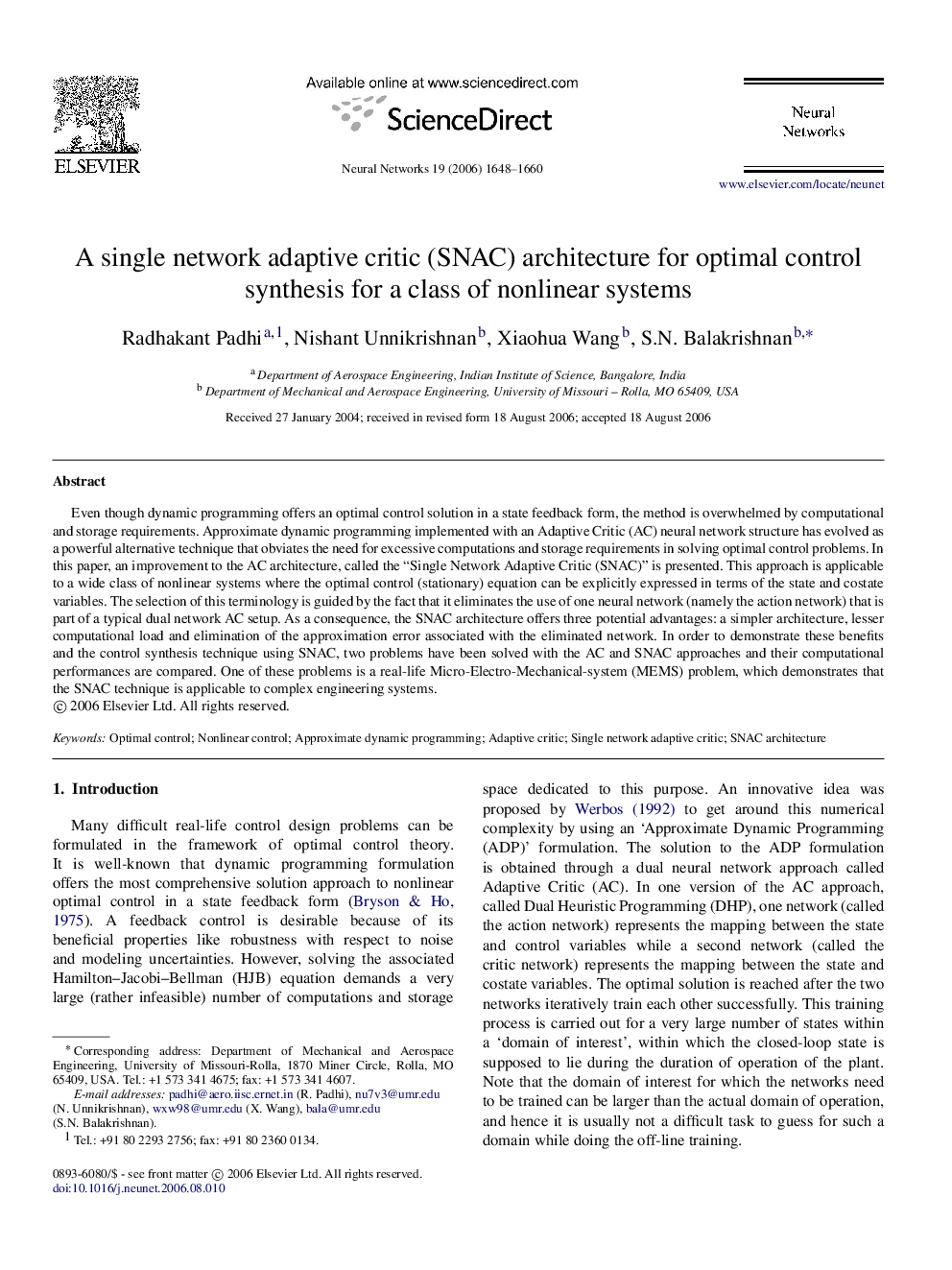| Article ID | Journal | Published Year | Pages | File Type |
|---|---|---|---|---|
| 404913 | Neural Networks | 2006 | 13 Pages |
Even though dynamic programming offers an optimal control solution in a state feedback form, the method is overwhelmed by computational and storage requirements. Approximate dynamic programming implemented with an Adaptive Critic (AC) neural network structure has evolved as a powerful alternative technique that obviates the need for excessive computations and storage requirements in solving optimal control problems. In this paper, an improvement to the AC architecture, called the “Single Network Adaptive Critic (SNAC)” is presented. This approach is applicable to a wide class of nonlinear systems where the optimal control (stationary) equation can be explicitly expressed in terms of the state and costate variables. The selection of this terminology is guided by the fact that it eliminates the use of one neural network (namely the action network) that is part of a typical dual network AC setup. As a consequence, the SNAC architecture offers three potential advantages: a simpler architecture, lesser computational load and elimination of the approximation error associated with the eliminated network. In order to demonstrate these benefits and the control synthesis technique using SNAC, two problems have been solved with the AC and SNAC approaches and their computational performances are compared. One of these problems is a real-life Micro-Electro-Mechanical-system (MEMS) problem, which demonstrates that the SNAC technique is applicable to complex engineering systems.
